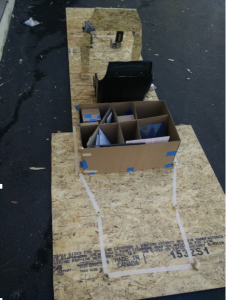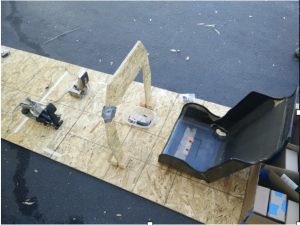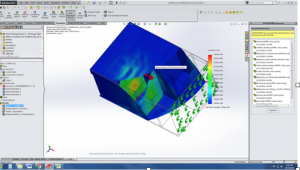Hello there, we are kicking this year out right so far. Instead of waiting until last minute, after all the parts have been manufactured, we started our wooden chassis mock-up this past week. The main goals of making a mock-up is to ensure that the design we created actually work out in the physical world and determine the best position of certain parts such as the accelerator pedal, brakes, and steering wheel. In the figures above, you can see several parts of our vehicle positioned in areas we believe is the best orientation for the drivers.
We salvaged most of the parts from our last year’s vehicle, Electra, to get the rough estimates. Expect the battery box, that we made out of cardboard from this year’s design. One of the main issues on Electra was the positioning and weight of the battery box. However, this year Thor will be a different story. We have changed the placement and combined the batteries into one section. We decided on this design because it adds another level of safety by not having our drivers jump over battery boxes and even lowering the weight significantly by not using as much material.
This year, I know we are more prepared because we are taking what we learned from Electra and putting it into every aspect of Thor. Thank you for your time and happy Thor’sday.
-Alanna Ho


